Small beginnings, 1095-
In 1095 when Pope Urban II issued the call for the First Crusade, the Western Christian World saw this as a defensive action. Since the early 8th century, Europe had been under ceaseless attacks from Islamic forces beginning with the Iberian Peninsula. Not only was most of Christian Spain conquered, but Islamic armies penetrated into the heart of France, only to be halted by Charles Martel in 732. Still, Islamic forces continued to threaten Europe, occupying Sicily, most of Southern Italy, and even besieging Rome in 846 and sacking St. Peter’s Basilica. Yet the First Crusade was not directed at Islam itself, but against the Seljuk Turks, who in their conquest of Palestine replaced the previous Arab tolerance of Christian pilgrims with intolerance and violence. By the end of July 1099, the First Crusade had achieved its objective of restoring the Holy Places to Christian control.
It was one thing to conquer; now the challenge was to rule. Immediately two problems confronted the newly created Kingdom of Jerusalem, being one of the worst examples of feudal fragmentation. The vassals of the King of Jerusalem were carving out their own feudal estates and becoming more powerful than their feudal lord. They were even engaging in conflict among themselves, often hindering efforts to counter any renewed threat from Islam. The second problem was the lack of a reliable fighting force to defend the conquest. Once the Crusade was finished, most of the surviving crusaders, having fulfilled their vows, returned home. The Knights Templar would provide the solution by becoming the first international standing army.
The opportunity came in 1118-19, when an idealistic band of knights led by Hugues de Payens offered their services to protect pilgrims en route to the Holy Places. Organizing themselves into a religious community, vows were made to the Latin Patriarch of Jerusalem. Baldwin II, King of Jerusalem, provided them with quarters in what had been the al-Aqsa Mosque, thought to be part of Solomon’s Temple. They became known as the Poor Knights of Christ of the Temple of Solomon, or simply the Knights of the Temple. Perhaps it was the King, who saw in these Poor Knights of Christ, the opportunity to create a fighting force. This was reinforced when the counts of Anjou and Champaigne joined the Order.
Now events moved to Europe. If this humble group of knights was to become an effective military force, papal recognition, autonomy, and an economic foundation had to be acquired. Hugues de Payens himself went to Europe on a mission to gain support and recruit new members. More importantly, the support of the outstanding church leader of the period was enlisted, Bernard, the Cistercian abbot of Clairvaux. In 1128-29 a Council was held at Troyes in Champaigne in which The Order of the Temple was recognized and provided with a Rule, drafted under Bernard’s guidance. Pope Honorius II approved the recognition, with Hugues de Payens becoming the first Master of the Temple.
It was Bernard de Clairvaux, who grasped the historical significance, when he wrote in Delaude novae militae (In Praise of a New Knighthood) that a new type of Order had been created, consisting of laymen who blended the knightly and monastic life. These soldier-monks would fight to protect Christian interests. While Hugues de Payens had been the leader with a mission and a vision, an individual possessed of administrative talent was needed. That was Robert de Craon, who became Master of the Temple c 1136.
By the time of the death of Grand Master de Craon in 1149, a series of popes had granted privileges that made the Templars an autonomous corporate body, answerable only to the papacy. Papal and royal exemptions allowed the Templars to become economically independent, financing their overseas military endeavors in great part from European donations of land and money. In the process, the Templars fashioned the first European-wide system of international banking. Their convents, particularly in London and Paris, became “clearing-houses” for the deposit, disbursement and transfer of funds. The system’s reliability for efficiency and honesty attracted church leaders and kings to entrust their funds and valuables to Templar security.
Their independence allowed the Templars to create an effective fighting force, a naval fleet, and a defensive system of fortresses in Palestine/Syria. Within the Iberian Peninsula, Templars supported the Reconquista, led by the Spanish and Portuguese kings. At the height of their power in the 13th century, the Order had around 7,000 members, including knights, sergeants-at-arms, non-military-sergeants, brothers, and priests. Their network consisted of some 870 castles, preceptories and convents spread throughout most of Christian Europe, Palestine and Syria. They inspired both the Hospitallers and the Teutonic Knights to adopt military roles. The Templars served as a model for new military orders established by the rulers within the Iberian Peninsula, such as Calatrava in Castile and Santiago in Leon.
In 1146, Pope Eugenius III granted the Templars the privilege of wearing the Red Cross or Cross Patteé on their mantles as a symbol of their willingness to shed their blood. Noted for their bravery, determination and discipline, much of the burden for the defense of the Crusader States fell upon them. Described as “lions in battle,” thousands of Templars gave their lives as they won everlasting glory in such battles as Cresson, Hattin, La Forbie and Mansurah. Despite their efforts, Jerusalem was lost to Saladin in 1187. The Templars established themselves at Acre, following the limited success of the Third Crusade. After the loss of Acre in 1291, the Templars, evacuating their last castles in Palestine/Syria, retreated to the island of Cyprus.
Who was to blame? 1200-
Who was responsible for the loss of the Crusader States? The Templars may have shared in the blame, due to ineffectual leadership and involvement in politics. But there were more important reasons, such as the failure to establish an effective political order in Palestine and the tendency of the great lords to become embroiled in political intrigue instead of defending the Kingdom against the common enemy. The arrival of new crusaders insisting upon pursuing the Holy War often upset the balance of power that had been achieved between the Christians and Muslims, thus encouraging a strong Islamic reaction. The problem of leadership was never solved. Even the kings made poor leaders of the Crusades, since their political distrust followed them to Palestine and they, too, had to return to their home kingdoms.
The idealism and moral inspiration of the First Crusade became tarnished and corrupted by greed for political power and wealth. Finally, there was the Islamic reaction that found effective leaders, such as Saladin, to lead the counter-attack to the European presence in the Middle East. In short, the odds were not only against the survival of the Crusader States but against the Templars as an enduring fighting force in the Middle East.
By the late 13th century, questions were being raised about the effectiveness of the military orders with proposals being made to unify them. The fall of Acre made the issue more pressing. While both the Hospitallers and the Teutonic Knights found new roles for themselves, the Templars lacked economic resources that were essential for any renewal of their military prowess due to the loss of lands in Palestine and Syria, the decline from patrons of gifts of land and money, the curtailing of their exemptions, and the impact of inflation. Recruitment became more difficult as the Templars became an aging Order. Moreover, the appearance of possessing great wealth became the kiss of death. Rulers, motivated by greed and jealousy, took advantage of the Templars’ loss of credibility and respect. Already in the early 14th century, English kings had violated the temple of the Templars in London.
Ultimately the fate of the Templars would be decided within France. Philip IV, King of France, made the move to challenge the continued existence of the Templars. Taking advantage of rumors of Templar corruption (no doubt exaggerated) and of a weak and compliant Pope, in 1307, Philip IV ordered the arrest of all Templars in France, including the Master of the Temple, Jacques de Molay. Pope Clement V ordered an investigation into the charges leveled against the Templars. Under immense political pressure, the Pope ordered the arrest of all Templars within Christian Europe and the seizure of their property.
In an attempt to resolve the Templar issue, Clement V convoked the Council of Vienne in 1312. The lack of credible incriminating evidence led the majority of the council fathers to conclude that the charges lacked merit. Then the Pope on his own authority issued the Bull, Vox in excelso, dissolving the Order. Templars were to be pensioned off and their property turned over to the Hospitallers.
The final act came on March 18, 1314, when Philip IV ordered the execution by fire of Jacques de Molay and Geoffroy de Charnay as relapsed heretics. Finding courage at the end, they both vigorously denied the charges against the Order. In 1312, after the Council of Vienne, and under extreme pressure from King Philip IV, Pope Clement V issued an edict claiming to dissolve the Order. But since the Order had existed eleven years before Papal recognition (founded in 1118, recognized by the Pope in 1129 at the Council of Troyes), the Pope only had the power to remove his ecclesiastical recognition.
Many kings and nobles, who had been supporting the Knights up until that time, finally acquiesced and dissolved the orders in their fiefs in accordance with the Papal command. Most were not as brutal as the French. In England, many Knights were arrested and tried, but not found guilty. Much of the Templar property outside of France was transferred by the Pope to the Knights Hospitaller, and many surviving Templars were also accepted into the Hospitallers.
In the Iberian Peninsula, where the king of Aragon was against giving the heritage of the Templars to Hospitallers (as commanded by Clement V), the Order of Montesa took Templar assets. The order continued to exist in Portugal, simply changing its name to the Order of Christ. This group was believed to have contributed to the first naval discoveries of the Portuguese. For example, Prince Henry the Navigator led the Portuguese order for twenty years until the time of his death (see our Portuguese Templar History). In Scotland, after Templars played a significant role in the Scottish victory at Bannockburn on June 24, 1314, Robert the Bruce joined the Templars and Hospitallers into a new Order of the Temple and of St. John.
Even with the absorption of Templars into other Orders, there are still questions as to what became of all of the tens of thousands of Templars across Europe. There had been 15,000 “Templar Houses”, and an entire fleet of ships. Even in France where hundreds of Templars had been rounded up and arrested, this was only a small percentage of the estimated 3,000 Templars in the entire country. Also, the extensive archive of the Templars, with detailed records of all of their business holdings and financial transactions, was never found. By papal bull it was to have been transferred to the Hospitallers, whose library was destroyed in the 16th century by Turkish invaders.
Some scholars believe that a number of Templars fled into the Swiss Alps. There are records of Swiss villagers around that time suddenly becoming very skilled military tacticians. An attack was led by Leopold I of Austria, who was attempting to take control of the St. Gotthard Pass with a force of 5,000 knights. His force was ambushed and destroyed by a group of about 1,500 Swiss peasants. Up until that point, the Swiss really had no military experience, but after that battle, the Swiss became renowned as seasoned fighters. Some folk tales from the period describe how there were “armed white knights” who came to help them in their battles. This may have been where the underground Templar “Brotherhood” ended up, in the Cantons (provinces) of Switzerland. It would explain why the Swiss flag is a Templar symbol on a red background. And it would explain why the Swiss suddenly took over where the Templars had left of as the bankers of Europe. Templar influence seems to be reflected in the coats of arms used by the Swiss Cantons and even in the naming of some Swiss locations like the Town of Sion.
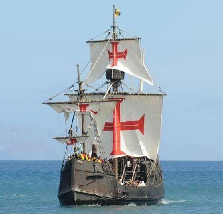 Little is known about what became of the Templar’s fleet of ships. There is record of 18 Templar ships being in port at La Rochelle, France on October 12, 1307 (the day before Friday the 13th). But the next day, the fleet had vanished. Interestingly, two Templars had survived the fall of Acre. In about 1340, they were discovered, married with families and serving a Sultan in Palestine. They were repatriated, provided with pensions, and received with great honor by the papal court.
Little is known about what became of the Templar’s fleet of ships. There is record of 18 Templar ships being in port at La Rochelle, France on October 12, 1307 (the day before Friday the 13th). But the next day, the fleet had vanished. Interestingly, two Templars had survived the fall of Acre. In about 1340, they were discovered, married with families and serving a Sultan in Palestine. They were repatriated, provided with pensions, and received with great honor by the papal court.
Restoration of the Order, 1705-
Did the Templars survive as an underground order after 1314? We will probably never know. In any case, the restored Order came into public view in Versailles, France, in 1705. It was at that time that a Convent General of the Order elected Philippe, Duke of Orleans, later Regent of France, to the Grand Mastership of the Order.
In 1736 Andrew Michael Ramsay, a Scottish Freemason and Catholic, delivered a speech to the Masonic Lodge in Paris, insisting that Freemasonry had begun in Palestine among the crusades, particularly the military orders. The result was a frenzy of new rituals, symbols, and myths based on the Crusades and the military orders. When the battle of Culloden in 1746 ended any hope of a Stuart restoration, French Freemasonry began to develop its own identity. Now a German noble and Freemason, the Baron Karl von Hund, revealed his belief that he had discovered a new form of Freemasonry, known as the Strict Observance, directly descendant from the Templars. It was based on Templar survival in the British Isles, particularly in Scotland. This belief in Templar survival became very popular among various Masonic lodges. Meanwhile, continental lodges were being influenced by the rationalism of the Enlightenment with many members becoming supporters of revolutionary change directed against absolute monarchy and a social order based on birth and privilege. Then came the French Revolution in 1789, with its promise of a New Order founded on brotherhood, equality and liberty.
Out of the turmoil created by the Revolution, a “child of the Revolution”, Napoleon Bonaparte, rose to power, promising to spread the ideals of the Revolution to all of Europe. After conquering most of continental Europe, he had himself proclaimed Emperor. In that same year of 1804, the restored Ordre du Temple (Order of the Temple) was founded by Dr. Fabre-Palaprat, a chiropodist, Ledru, a medical Doctor, Claude-Mathieu, and Radix de Chevillon. Fabre-Palaprat accepted the office of Grand Master.
Under the leadership of Dr. Bernard Raymond Fabre’-Palaprat, the Order began to flourish again, especially with the patronage of Napoleon Bonaparte. Fabre’-Palaprat was a product of the Age of Enlightenment, and saw Templarism as an expression of help, decency, dedication and chivalrous behavior. He had a remarkable talent for communicating the romantic ideals of knighthood to other people and, as a result, many prominent citizens became members and the Order grew rapidly. At the same time, two interesting documents surfaced. One was the Charter of Transmission, by which an alleged successor to de Molay, Jean M. Larmenius, provided for the secret survival of the Knights Templar. This document, written in ciphers, also included in cipher the signatures of Grand Masters from Larmenius to Fabre-Palaprat. The second document was the Statutes of 1705, written under the direction of Philip, the Duke of Orleans, whom the founders of 1804 claimed as a restorer of the Templars.
For motives of his own, Napoleon Bonaparte approved of this “restoration”, even allowing a grand ceremony in Paris, honoring de Molay and all other Templar martyrs. Napoleon, upon becoming Emperor, created a new nobility. Perhaps he saw these new Templars as serving as a counter-balance to the Masonic lodges, whom he distrusted due to their political radicalism.
By 1808, through successful recruitment the new Order had established Priories and Commanderies throughout most of the Grand Empire, including Italy and Switzerland. Ties to its Masonic origins were severed, with this Order of the Temple proclaiming its autonomy and adherence to “the Catholic Apostolic and Roman religion.” This promising beginning was quickly dashed by Fabre-Palaprat when he revised the Statutes of 1705 to justify assuming absolute power, a schism erupted that lasted until 1814.
When unity was finally restored, the Order once again prospered. When constitutional monarchy was established in France, the Order supported the restored Bourbon King, Louis XVIII, and the king in return granted the Templars recognition. When Charles X attempted to restore royal absolutism, the Templars supported the revolt of 1830 and the return of constitutional monarchy. Once again Fabre-Palaprat became the source of contention. Earlier he had formed the Johannite Church of the Primitive Christians. When, in 1833, he attempted to impose his Johannite beliefs upon the Templars, the result was once more schism. One faction retained its chivalric traditions and obedience to the Catholic Church. The death of Fabre-Palaprat in 1838 provided another opportunity for unity. This attempt failed when the French palaprien Templars refused to accept the choice of Sir William Sidney-Smith, the British Grand Prior, as Grand Master.
A bright period for the Order of the Temple occurred in 1853, when, by royal decree, Emperor Napoleon III recognized the Ordre du Temple (“Palaprien,” those that followed in the line of Palaprat) with the right to wear its insignia and decorations within France. Inside France, the Palaprien Templars continued to choose Regents until the defeat and capture of Napoleon III by the Prussians in 1870, causing the Ordre du Temple to lose it’s strongest protector. The centrally organized Palaprien Templars soon faded from existence except that several of their former priories continued on autonomously.
The years of the Regents (Caretakers), 1930-
The Templar revival in the 20th century owed its existence to developments within the Grand Priory of Belgium, which had been founded under Dr. Fabre-Palaprat in 1825. Factional disputes between Catholic and Masonic members, along with European political developments, resulted in its being put to sleep for several years. In 1932, several former members re-established the Belgian Grand Priory, taking the name of “The Sovereign and Military Order of the Temple of Jerusalem.” Hoping to re-establish this Order of the Temple as an international organization, a Regency was formed. The idea behind this Regency was that it would function as the temporary leadership of the Order until a new Grand Master could be elected.
Emile Isaac, who later took on his wife’s last name, “Vandenberg,” to hide his Jewish ancestry from the Nazis, was a key figure at this time. As Regent of this Belgian Grand Priory, Emile devoted much of his energy to revitalizing Templar Priories across Europe, including France, Italy, Portugal and Switzerland. Such a promising development was cut short by the Second World War. Viewing the German occupation of Belgium as a danger to Templar survival, Vandenberg made a temporary transfer of the leadership and archives of the Order to the care of the Portuguese Grand Prior, Antonio Campello de Sousa Fontes. Later in 1943, Emile requested the return of the archives. Then, de Sousa Fontes took advantage of the sudden death of Emile in that same year to assume the title of Regent. Once more there was schism, with some Priories rejecting his leadership. Sadly, there is evidence that the “car accident” that killed Emile Isaac was orchestrated by the Nazis who wanted this high-profile Jewish Templar dead (13).
In 1960 Antonio Campello de Sousa Fontes passed away and left it in his will that his son should succeed him as Regent of the order. It is interesting to note that the original Last Will and Testament of Antonio de Sousa Fontes was dated August 20, 1948, and not certified by a notary with the amended changes designating his son as successor until February 26, 1960, which was eleven days after Antonio de Sousa Fontes had already passed away! How a deceased man could have amended his will to provide for the succession of his son is a mystery we’ll never be able to solve. Thus, in 1960, when Fernando Campello de Sousa Fontes tried to succeed his father, ascribing to himself the title of Prince Regent, he met stiff resistance. Since the beginning of the Order in 1118, Grand Masters had always been elected and hereditary succession of the Grand Master’s seat has no precedence. Therefore many of the priories did not accept de Sousa Fontes’s son as the legitimate leader of the order and they soon got tired of the despotic way he tried to rule the Order.
In 1969, Regent de Sousa Fontes issued a Magistral Edict convoking an International Convent General that would first meet in Paris in September, 1970, with the purpose of electing a new Grand Master. Many of the Priories were tired of de Sousa Fontes’s despotic and undemocratic leadership, his utter contempt for transparency, and blatant mismanagement. At that historic Convent General in Paris, participants democratically elected General Antoine (originally Andrzej) Zdrojewski (the Grand Prior of Europe and of France) to be the next Grand Master. It’s important to note that de Sousa Fontes authorized and attended this Paris Convent for the purpose of electing a new Grand Master as he believed he was going to win. In anticipation, Fontes had even prearranged a symbolic “victory lap” of two additional Conclaves: the first scheduled for 1971 in Chicago, Illinois, and the last in 1973 in Portugal.
Zdrojewski had been the Chief of the Polish Military Operations in France. The relationship between the French and Poles, fighting a common enemy, was very friendly. The Polish Government in Exile was also covertly regrouping remnants of army units (what would have been the 3rd and 4th Polish Infantry Divisions) for direct military contact to destabilize the German occupation of France. General Juliusz Kleeberg mustered one of the largest secret armies in France. The unit became known as the Polish Organization for Fighting for Independence (POWN) and was later commanded by Colonel Zdrojewski. Zdrowjeski became a war hero by distinguishing himself as the commander of this secret army and in 1944, after becoming a French citizen, the French Government promoted Zdrojewski to General. (9) (6) (1)
The defeated Fontes was both shocked and furious upon the election of Zdrojewski but he wasn’t willing to obey the Templar Rule of Succession by giving up power. He tried to have the results nullified by saying that General Zdrojewski was only elected Grand Master because the French Grand Priory had been “infiltrated” by the Gualist Secret Police, Service d’Action Civique (S.A.C.). Similar to the CIA or MI6 of today, the S.A.C. was established by President Charles de Gaulle as a 1901 law association on January 4th, 1960, in the proclaimed aim of providing unconditional support to de Gaulle’s policies (2). While it was true that the French Grand Priory included members from the S.A.C., it was certainly not “infiltrated.” Rather, these were their legitimately accepted members. General Zdrojewski had served under, been promoted to General by, and fully supported his former Commander, President Charles de Gaulle. He knew full well who the S.A.C. members were and accepted them into his French Grand Priory.
History is written by the political powers that survive to tell the tale. While President Charles de Gaulle was in power, the S.A.C. were the heroes defending the Republic and protecting President Charles de Gaulle during the precarious years following World War II. But when de Gaulle’s political enemies took power, they portrayed the S.A.C. as criminals (dirt can be found on even the best of organizations). Saying that the French Grand Priory was “infiltrated” by the S.A.C. is as ridiculous as saying the Templars of today have been infiltrated by retired military personnel. The Templars of today are fully aware that much of their ranks consist of retired military personnel and welcome them in.
Fontes’s failed attempt to have the election results nullified caused a split in the OSMTH. Some of the Grand Priories, including the French, Belgian, Swiss, and Polish, followed the newly elected General Zdrojewski, and some stayed with the defeated Fontes. Alfred Zappelli (Grand Prior of Switzerland), General Georges de Bruyn (Grand Prior of Belgium), and Badouraly-Somji Alibay (Commander of the Polish Commandery) were also backers of General Zdrojewski. After the election of Zdrojewski, our branch became known as OSMTJ (or “OSMTJ-Zdrojewski”). Those who continued to follow de Sousa Fontes were known as OSMTH (or “OSMTH-Regency”). “OSMTJ” is the French acronym for, “Ordre Souverain et Militaire du Temple de Jérusalem.” “OSMTH” is the latin translation of that: “Ordo Supremus Militaris Templi Hierosolymitani” (“Hierosolymitani” means “Jerusalem”). In English, you could translate the latin to, the “Supreme ( or Sovereign) Military Order of the Temple of Jerusalem.”
On February 22, 1971, Grand Master Zdrojewski convened a Grand Council meeting of all member Grand Priories in Paris at Richelieu I. The first motion passed at this Grand Council was a decree that Fernando de Sousa Fontes was henceforth, stripped of all titles, ranks, and had lost his right to wear the robes and insignia of the Order. The reason for this was that the aforementioned had displayed no respect for the hierarchy or rules of succession of the Order and had committed violations of the rules of discipline of the Order. Specifically, Fernando de Sousa Fontes was known to sell ranks and titles in the order without merit. In fact, although the rules of the Order set forth only one Grand Prior per country at a time, Fernando de Sousa Fontes had accepted bribes to appoint several concurrent Grand Priors in many countries (“Grand Prior” is supposed to be the title for the one national leader in each country). For example, Fontes has accepted bribes to appoint six simultaneous Grand Priors in France, five in Spain, two in the United States twice (simultaneous U.S. Grand Priories in ’64 & again in ’95), two in Scotland, and two in Serbia. Each of these Grand Priors, being lead to believe they would be the only leader of their nation, had to pay a small fortune to de Sousa Fontes for that position only to discover Fontes was reselling that position to others!
In late 1973, Grand Master Zdrojewski carried out a reorganization of the OSMTJ and a reform of the Statutes. He approved the Grand Priories re-asserting the independence of the International Federation of Autonomous Grand Priories of the OSMTJ (Each member Grand Priory was recognized as autonomous). The Swiss Grand Priory accepted these reformed statutes in 1973 while the Belgian and United States Grand Priories accepted them in 1975.
One of the OSMTJ’s most important leaders at this time was the Grand Prior of Switzerland, Alfred Zappelli. Zappelli moved to Geneva where he was a Banker and Financial Consultant (3). He became the Grand Prior of Switzerland from 1967 until the mid 90’s except for a brief falling out with the Grand Master resulting in his expulsion in 1971 and reinstatement the following year. The OSMTJ suffered some tumultuous years from 1974, until near the end of the 70’s when it was necessary for Grand Master Zdrojewski to keep a low profile due to changes in the political powers of France (the election of new French President Valéry Giscard d’Estaing in 1974). Certain repercussions were meted out in the form of “investigations” (witch-hunts) on high profile supporters of former French President Charles de Gaulle and on former members of the S.A.C.. General Zdrojewski had been one of de Gaulle’s staunchest supporters. During these years, Grand Prior Alfred Zappelli stepped up to hold the OSMTJ together. Zappelli recruited and introduced Philip A. Guarino to Grand Master Zdrojewski who appointed Philip the Grand Prior of the United States on February 15th, 1973 (TheKnightsTemplar.org) (8). Zappelli went on to found several other Grand Priories including one in Italy under Pasquale Gugliotta, who was named Grand Bailli of Italy on June 16, 1976 (2). Zappelli continued giving lectures about the Knights Templar and recruiting for the OSMTJ all over the world. Despite his important position, Zappelli was a humble man and the Grand Priory he established still exists today at: http://Templiers.ch
General Antoine Zdrojewski remained Grand Master until his death in 1989. Before his death, in 1986, he issued a Charter of Transmission that gave authority to Georges Lamirand, the Grand Seneschal, and nominated him as his successor. Lamirand, the Director of the Billancourt Renault factory, had been serving as the Grand Prior of France. As Zdrojewski had wished, Georges Lamirand succeed Zdrowjewski as Regent (Caretaker) of the order, and then he went on to be elected Grand Master. Lamirand had started the war as an Artillery Officer in 1939, but had been promoted quickly through the ranks to become the Vichy General Secretary of Youth from September 1940 to March 1943. Starting in 1943, he covertly started working for the French Resistance and after ’43, he openly worked against the Vichy Government. Lamirand was also the Mayor of La Bourbole, Puy de Dome from 1955-1971. In the last decade of his life, Georges Lamirand was in poor health and appointed Dr. Nicolas Haimovici Hastier to the office of Grand Commander and Guardian of the Faith (11).
When Lamirand died on February 5th, 1994, his Grand Commander and Guardian of the Faith, Dr. Nicolas Haimovici Hastier, became the Regent of the Order. Dr. Nicolas was a naturalized French citizen, married to a German, and had lived a long time in Nice, France (on the French Riviera) before moving to Sanremo, Italy (11)(3).
Nicolas was a distinguished physician with more than 100 published scientific articles in peer-reviewed medical journals, as well as a consultant to the American Administration (Served in a Medical Overseeing capacity on several Navy ships including The USS Enterprise). He taught in various universities in France and for 12 years he taught at New York Medical College (Paramus, New Jersey) He was a District Governor of Rotary in France and an officer in many other humanitarian organizations. In 2001, Nicholas wrote the book, The Rule of the Order of the Templars. It took him about 15 years to write this book and is considered a masterpiece: http://www.sartori.com/osmth/osmth4/book/
On April 17th, 2022, a fair and legitimate election was concluded run by an independent organization. Twenty two Priories voted and Philippe Matta was elected Grandmaster. Philippe Ghostine Matta, KGCTJ, was a member of OSMTJ since 2018, Lebanese on his mother’s side and Brazilian on his father’s side, is married with two daughters and one son, living in Beirut Lebanon. He was born into a Christian family and has remained Christian his entire life. He is Chairman of Mabco Trading and Contracting Company in Lebanon as well as General Manager of Rigotherm Pipes and Fittings Industry in Lebanon and Brazil. www.rigotherm.com.br
Of those Priories that had initially stayed faithful to de Sousa Fontes following his 1970 defeat, it didn’t take long for the majority to realize that they had stayed with the wrong man. Fernando De Sousa Fontes, up until this time, had called himself the “Regent” or caretaker of the order until such a time that a Grand Master could be elected. Now he changed his tune as he continued dismantling every democratic process in the OSMTH until he unilaterally changed the statutes to give himself the title of “Grand Master.” His revised statutes, which he created in 1990, stated that if a Grand Master had not been elected for 903 days, the Regent automatically becomes Grand Master for life without an election! When his national leaders united in their request for a Council of Grand Priors to allow them to have some input, Fontes mocked them by creating this council with only his family as members! In 1995 a lawsuit was filed against Fontes and there were allegations of him having misspent a significant portion of membership dues to fund his own lavish lifestyle (7).
At this point, in November of 1995, the majority of the OSMTH Grand Priories under Fontes assembled in the Austrian town of Salzburg and democratically voted to leave Fernando de Sousa Fontes, in effect, creating a new OSMTH Order (the original Order under Fontes being called the “OSMTH-Regency or OSMTH-Porto”). It’s important to note that their Grand Master, de Sousa Fontes, neither authorized nor attended this meeting and that no election took place at this meeting (12). We respect this new OSMTH as our Brothers and Sisters for we understand why they broke away from de Sousa Fontes.
References
(1) Zdrojewski promoted to General: http://www.swordforum.com/forums/showthread.php?75540-Would-love-some-assistance-on-this-sword
(2) SAC (French: Service d’Action Civique; or Civic Action Service https://en.wikipedia.org/wiki/Service_d’Action_Civique
(3) Alfred Zappelli http://news.google.com/newspapers?nid=1291&dat=19771002&id=lidUAAAAIBAJ&sjid=B40DAAAAIBAJ&pg=4825%2C4612611
(4) Pasquale Gugliotta named Bailli of Italy http://books.google.com/books?id=x-uhAgAAQBAJ&pg=PT36&lpg=PT36&dq=Pasquale+Gugliotta+Bailli&source=bl&ots=vkVzPcOXUx&sig=qJGmEqBuoMcddhpaH8_rG0xE1Ew&hl=en&sa=X&ei=9qb8UueuIOTN0QHngIHQDg&ved=0CCkQ6AEwAA#v=onepage&q=Pasquale%20Gugliotta%20Bailli&f=false
(6) Background on General Antoine (or Antoni) Zdrojewski about http://pl.wikipedia.org/wiki/Antoni_Zdrojewski
(7) See Lawsuit: SMOTJ Inc. v. de Sousa Fontes, case No. U.S.D.C. Texas No. 3-995CV-0890G
(8) History of Philip A. Guarino: http://www.TheKnightsTemplar.org/philip-guarino/
(9) History of Zdrojewski in WWII: http://www.PolandInExile.com/exile4.htm
(11) Venceslai, Stelio. L’Utopia Templare. Rome: Laris Editrice, 2011 . Print. Pages: 109-112.
(12) See the history leading up to this meeting and what took place: https://www.theknightstemplar.org/forums/topic/fontes-versus-smotj-osmth-kti/ )
(13) Read the history of Emile Isaac (Vandenberg): http://mechelen.mapt.be/wiki/Emile_Clement_Joseph_Isaac_Vandenberg


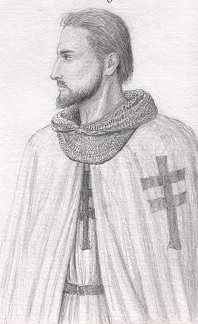

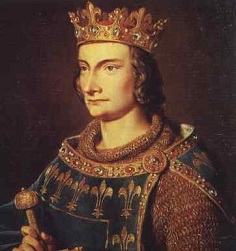
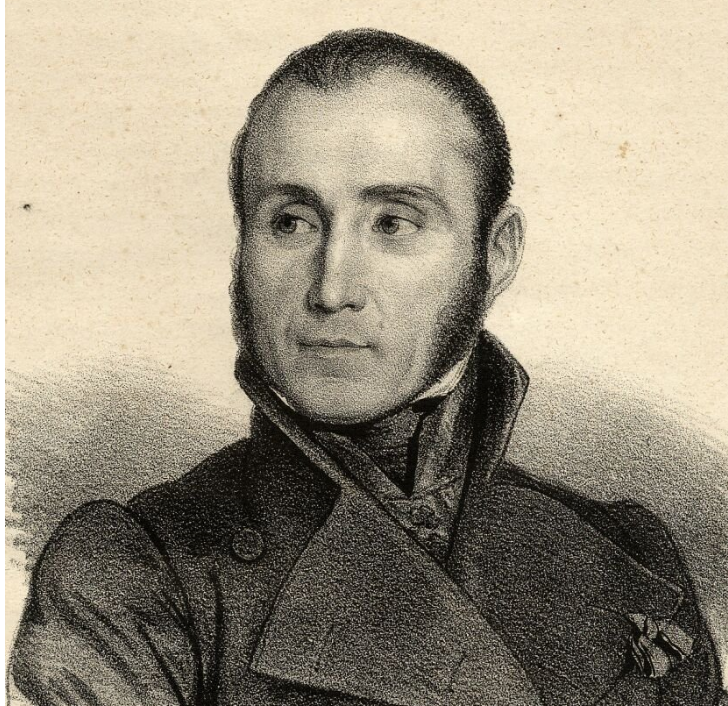
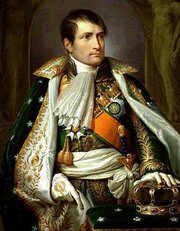
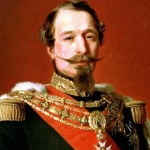
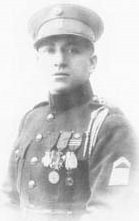
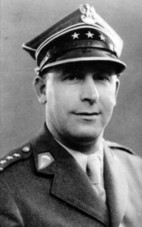
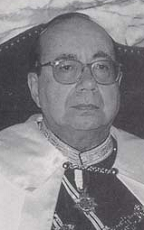


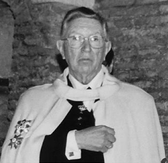
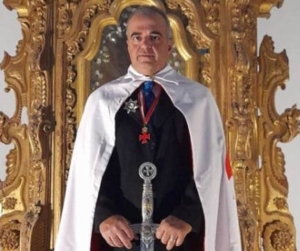
Recent Comments